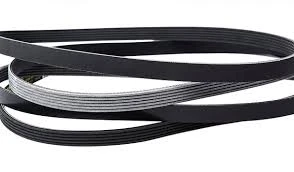- Arabic
- French
- Russian
- Spanish
- Portuguese
- Turkish
- Armenian
- English
- Albanian
- Amharic
- Azerbaijani
- Basque
- Belarusian
- Bengali
- Bosnian
- Bulgarian
- Catalan
- Cebuano
- Corsican
- Croatian
- Czech
- Danish
- Dutch
- Afrikaans
- Esperanto
- Estonian
- Finnish
- Frisian
- Galician
- Georgian
- German
- Greek
- Gujarati
- Haitian Creole
- hausa
- hawaiian
- Hebrew
- Hindi
- Miao
- Hungarian
- Icelandic
- igbo
- Indonesian
- irish
- Italian
- Japanese
- Javanese
- Kannada
- kazakh
- Khmer
- Rwandese
- Korean
- Kurdish
- Kyrgyz
- Lao
- Latin
- Latvian
- Lithuanian
- Luxembourgish
- Macedonian
- Malgashi
- Malay
- Malayalam
- Maltese
- Maori
- Marathi
- Mongolian
- Myanmar
- Nepali
- Norwegian
- Norwegian
- Occitan
- Pashto
- Persian
- Polish
- Punjabi
- Romanian
- Samoan
- Scottish Gaelic
- Serbian
- Sesotho
- Shona
- Sindhi
- Sinhala
- Slovak
- Slovenian
- Somali
- Sundanese
- Swahili
- Swedish
- Tagalog
- Tajik
- Tamil
- Tatar
- Telugu
- Thai
- Turkmen
- Ukrainian
- Urdu
- Uighur
- Uzbek
- Vietnamese
- Welsh
- Bantu
- Yiddish
- Yoruba
- Zulu
Aug . 13, 2024 23:11 Back to list
Find the Best V-Belts for Isuzu Vehicles to Ensure Optimal Performance and Durability
Understanding V-Belts for Isuzu Vehicles
V-belts play a critical role in the overall functioning of automotive engines, including those found in Isuzu vehicles. These belts are designed to transfer power from the engine's crankshaft to various accessories, such as the alternator, water pump, and air conditioning system. Given their importance, understanding the specifications, types, and maintenance of V-belts can significantly enhance the performance and longevity of Isuzu vehicles.
What is a V-Belt?
A V-belt, named for its trapezoidal cross-section, has been a staple in automotive engineering for decades. This design allows for effective power transmission while reducing slippage. V-belts are typically made from rubber and reinforced with fibers to withstand high temperatures and stress, ensuring reliability in performance.
Importance of V-Belts in Isuzu Engines
In Isuzu vehicles, the V-belt is crucial for driving several key components, which include
1. Alternator The alternator charges the vehicle's battery and powers the electrical systems when the engine is running. A worn or damaged V-belt can lead to insufficient charging and electrical failures.
2. Water Pump The water pump circulates coolant through the engine and radiator, maintaining optimal operating temperatures. If the V-belt fails, it can cause the engine to overheat, leading to potential engine damage.
3. Power Steering Pump Many Isuzu models utilize the V-belt to drive the power steering pump, affecting steering responsiveness and ease of maneuverability.
Given this critical role, it is essential to ensure that the V-belt is in good condition and properly tensioned.
Types of V-Belts
v belt for isuzu

Not all V-belts are created equal; various types serve different purposes. The most common types include
- Classic V-Belts Traditional and widely used, these belts are often adequate for many basic applications.
- Narrow V-Belts Also known as Wedge belts, these provide a greater power transmission capability due to their design and lower space requirements, making them ideal for compact engine designs in modern Isuzu vehicles.
- Cogged V-Belts Featuring notches along their inner surface, cogged belts offer enhanced flexibility and reduce heat buildup, providing better performance, especially in high-load scenarios.
Maintenance and Replacement
Regular maintenance of V-belts is essential to prevent unexpected failures. Isuzu vehicle owners should perform routine checks for signs of wear, such as
- Cracks, fraying, or splits in the belt material - A shiny, glazed surface indicating slippage - Signs of oil or coolant leakage that can degrade rubber
Most manufacturers recommend replacing V-belts every 50,000 to 70,000 miles, but this can vary depending on driving conditions and usage. Isuzu owners should refer to their vehicle's manual for specific recommendations.
Conclusion
V-belts are integral components of Isuzu vehicles, contributing to the efficient operation of the engine and its accessories. Understanding their function, types, and maintenance will empower vehicle owners to make informed decisions about V-belt care, enabling smoother rides and better performance. Regular inspections and timely replacements will not only prevent costly repairs but also enhance the overall driving experience. Whether you are a seasoned mechanic or a casual driver, knowledge about V-belts can lead to lasting benefits for your Isuzu.
-
Korean Auto Parts Timing Belt 24312-37500 For Hyundai/Kia
NewsMar.07,2025
-
7PK2300 90916-T2024 RIBBED BELT POLY V BELT PK BELT
NewsMar.07,2025
-
Chinese Auto Belt Factory 310-2M-22 For BMW/Mercedes-Benz
NewsMar.07,2025
-
Chinese Auto Belt Factory 310-2M-22 For BMW/Mercedes-Benz
NewsMar.07,2025
-
90916-02660 PK Belt 6PK1680 For Toyota
NewsMar.07,2025
-
drive belt serpentine belt
NewsMar.07,2025

